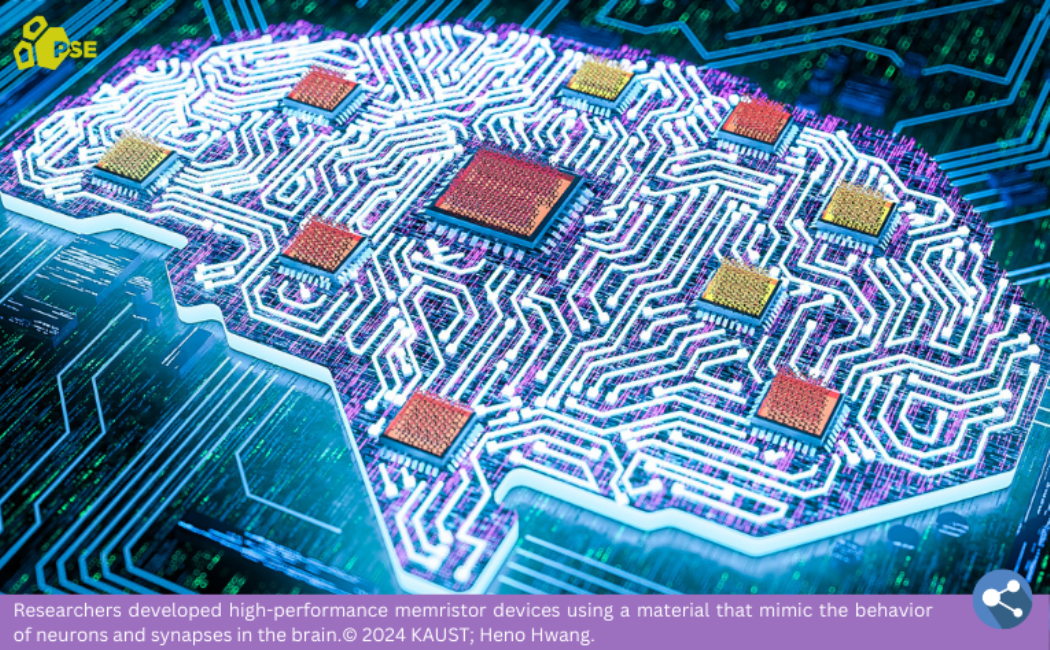

LATEST
NEWS

21 February, 2024
Van der Waals crystals comprise weakly bound atomic layers that can be pulled apart or exfoliated to create two-dimensional materials. KAUST researchers have now shown that these materials can be used in high-performance, energy-efficient and high-capacity memory devices known as memristors.
The signature property of a memristor is that its electrical resistance depends on the amount of current running through it and, importantly, that this resistance remains even after the current stops. So memristors remember how much current was previously flowing through them, and this feature gives them their name: a portmanteau of memory and resistor.
This behavior is similar to the neurons and synapses of the brain, and so memristors are an exciting building block for so-called neuromorphic computers.
Doctoral student Yinchang Ma and other group members in Xixiang Zhang’s team from KAUST — working with colleagues from the University of Melbourne, Australia, Zhejiang University and Sichuan University in China, and the University of Maryland, College Park, in the United States — have created a high-performance and robust memristor from a metal thiophosphate CuCrP2S6.
Other materials in this family, notably CuInP2S6, have previously been studied for memristor applications because they are ferroelectric. This means their atomic structure can be permanently electrically polarized (the average negative electrical charge is spatially displaced from the average positive charge) by applying an electric field. The problem is that CuInP2S6 loses this ferroelectric behavior at temperatures above 42 degrees Celsius. This affects the materials’ performance, which deteriorates and becomes unstable.
Read more at KAUST Discovery.